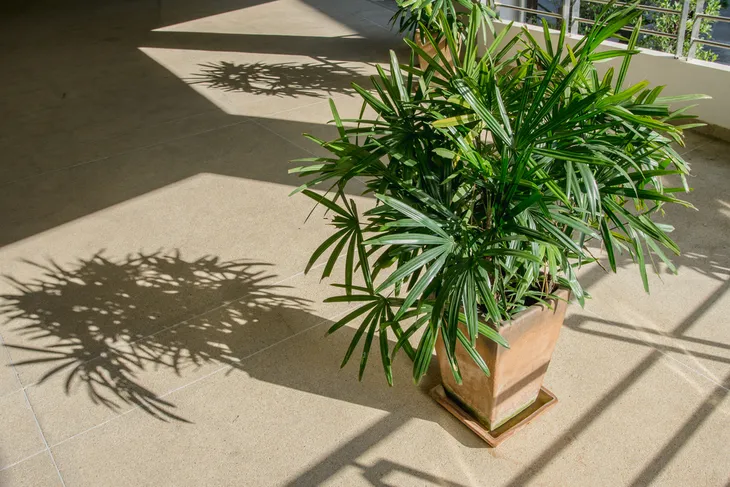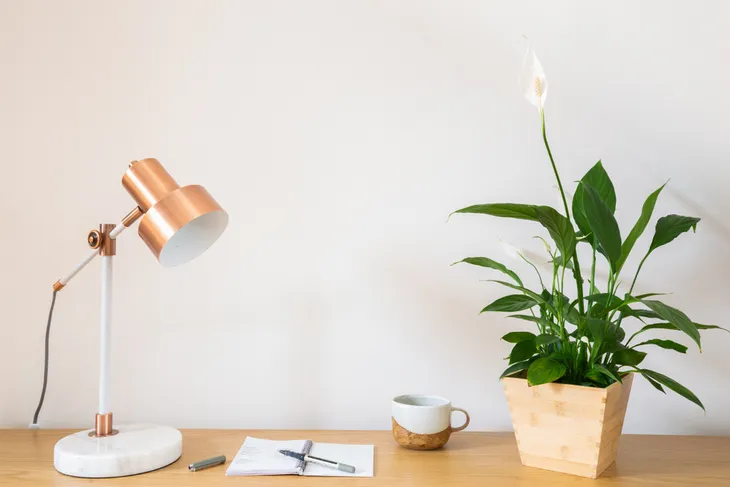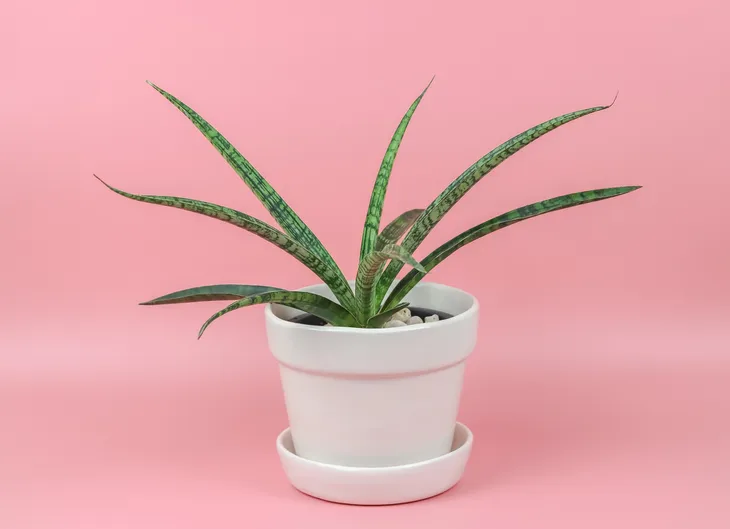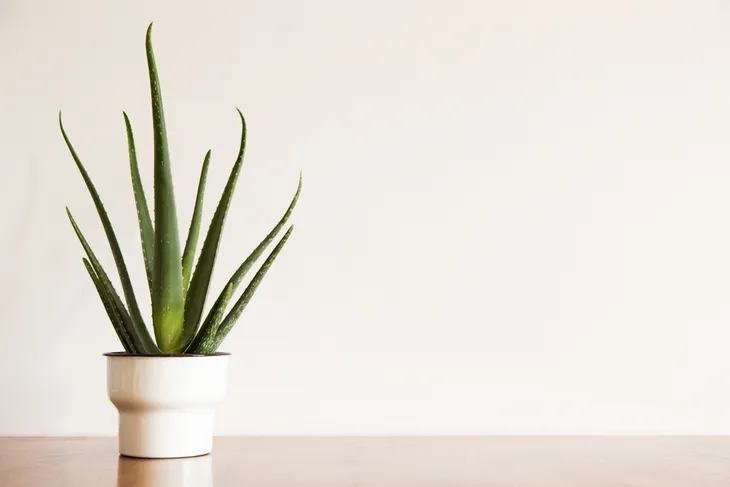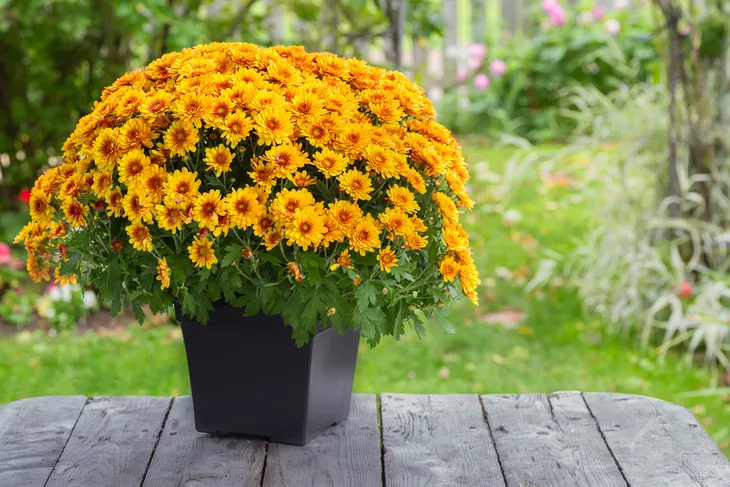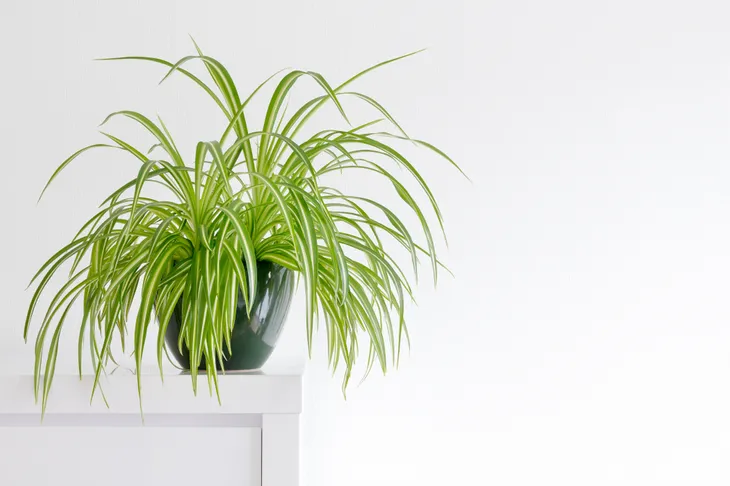Considering the average human being spends roughly 90-percent of their time indoors, the quality of the air is certainly important—particularly when you consider the toxic compounds from paint and wallpaper, cleaning products, furniture, pollen, mold, bacteria, and in poorly ventilated homes.
Luckily, welcoming potted houseplants into your home can help to purify air and reduce harmful particulates in the air, as they absorb carbon dioxide to photosynthesize fresh oxygen.
Here are eight common and hearty houseplants that promote air quality…
1. Bamboo Palm
Remember a few years back when it was in vogue to give miniature bamboo trees as gifts of luck? Well, the bamboo palm (or chamaedorea seifrizii) is a formaldehyde-filtering superstar, especially when they grow quickly from small palms to 12-foot high trees.
2. Peace Lily
I often give a peace lily (or spathiphyllum sp.) as a housewarming gift and now I’m glad I do. It seems the fragrant, white-flowering plant packs a major air-cleaning punch to whatever indoor setting it graces—banishing several indoor pollutants, gases, and solvents like trichloroethylene, benzene, ammonia, and formaldehyde. Also, it’s a hearty plant that needs infrequent watering and shady surrounds.
3. Dracaena
The dracaena (or ponytail plant, as I’ve referred to it for years) comes in various shapes and sizes, with the topknot of long, thin leaves lined red, tan, or creamy white. The common house and office plant is a wonderful filter for xylene, formaldehyde, benzene, and trichloroethylene. However, don’t bring it into a pet-friendly home, as it’s toxic if nibbled on by cats and dogs.
4. Aloe Vera
Not only is the aloe plant wonderful to have on hand in wound- or burn-healing emergencies. The gel within each leaf contains a mixture of amino acids, vitamins, and enzymes with anti-bacterial, anti-inflammatory and soothing benefits. While the plant itself filters formaldehyde from the air.
5. Garden Mum
The colorful garden mum (or chrysanthemum morifolium) is available in almost every pastel shade under the rainbow. In addition to being inexpensive and readily available for purchase at almost any garden store or flower market, potted mums are air-purifying superheroes. The plant was found to removing multiple toxins from indoor airspace—including formaldehyde, ammonia, benzene, and xylene—which are common components of synthetic building materials, carpeting, and furniture upholstery from household items like manufactured wood, adhesives, carpeting, cleaners, and upholstery.
6. Weeping Fig
Not only will you love the sweet and plentiful fruit yielded from a healthy ficus benjamina (or weeping fig) the plant needs infrequent watering and indirect sunlight, which means that its fairly low maintenance. Bring it inside during the cooler months to decrease pollutants like benzene and formaldehyde from indoor spaces, and move it outside in the warmer months where it will thrive and grow to heights up to 10-feet!
7. Snake Plant
You wouldn’t want a literal snake in your home, but a snake plant (or sansevieria trifasciata) is a hearty plant for newbie green thumbs (and even black thumbs). This plant requires very little upkeep—only infrequent watering and little sun. However, it will keep other sneaky indoor menaces at bay, by filtering trichloroethylene, benzene, xylene, and formaldehyde from the air.
8. Spider Plants
Thin-leafy spider plants (or chlorophytum comosum vittatum) is an ideal novice houseplant because it’s tough to kill and can live through almost anything, even if you forget to water it once in a while. The only thing the spider plant needs to flourish is bright, indirect sunlight to keep multiplying shoots (or growing baby spiderettes). The plant will also suck up harmful xylene and formaldehyde from the air.

